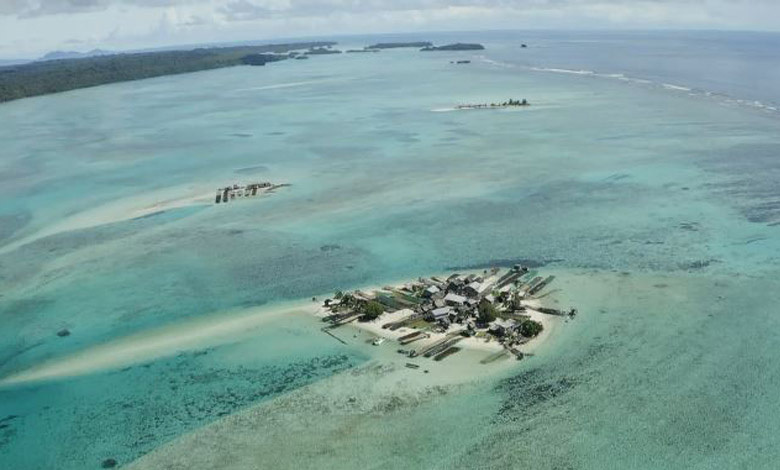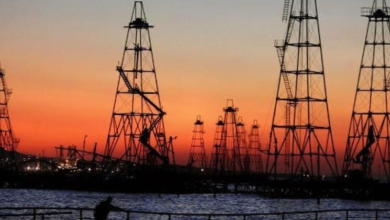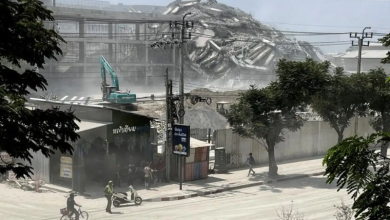Climate Change and Conflict in the Solomon Islands

The Solomon Islands have long been acquainted with the capricious nature of weather, a familiarity deeply embedded in their oral histories. The wisdom passed down through generations equips communities to respond effectively to environmental changes. They can anticipate and adapt based on Indigenous knowledge of history, as demonstrated when a tsunami in 2013 followed a pattern similar to one from 150 years ago, enabling prepared evacuations.
Yet, climate change’s current and impending impacts pose unique challenges to the Solomon Islands, pushing its government and institutions to their limits and raising concerns over climate security. The nation’s vulnerability stems from several factors, making it the second-most at-risk country for natural disasters.
A high proportion of the population—65 percent—lives within one kilometer of the sea, increasing exposure to rising sea levels. The accompanying risks include land loss and elevated salinity in freshwater sources. Such changes disrupt marine habitats like mangroves, river estuaries, and coral reefs, directly affecting 47 percent of Solomon Island households that rely on fishing and invertebrate harvesting for sustenance and income.
Climate-induced environmental challenges are driving migration within the country, particularly to urban areas. Solomon Islands’ informal settlement practices limit the options for communities to adapt effectively to climate change. In some cases, informal land ownership arrangements have led to complications when aid agencies refused to rebuild community structures for Kiribati migrants affected by a tsunami.
Historical migrations have seen people move from high elevations to coastal areas to access essential services. In the face of sea-level threats, relocation to inland or higher elevation areas inhabited by the same cultural groups offers a way to ensure the safety of at-risk communities. However, this presents displacement issues, particularly for people without such links who must grapple with the question of where to settle as sea levels continue to rise.
On low-lying atolls like the Malaita Outer Islands, environmental hardships have already led to internal migration to local urban areas due to food scarcity. The remote nature of these islands and their distance from services and trade reduce the chances of establishing secure livelihoods, rendering entire islands potentially uninhabitable shortly.
In response, some communities have resorted to building artificial islands, often with low elevations. Despite their resilience in constructing seawalls around their homes, sites such as graves are now under threat from seawater inundation, posing a risk of an environmental crisis. The question of how to continue living on these islands amid ongoing sea-level rise remains unanswered.
Eighty percent of land in the Solomon Islands is owned by tribes, necessitating mediation, negotiation, and government involvement in the allocation of land rights for migration. At present, climate-induced migration is predominantly managed at the family or small clan level, with people from unlivable islands seeking new housing within family- or tribal-owned lands, often partially subsidized by employers or through squatting in disaster-prone urban areas.
Urban drift and informal settlements around towns like Honiara have led to overcrowding and strained services, fostering resentment and forced evictions, reminiscent of the low-level civil war from 1998-2003. A lack of action on decentralization and transferring land development control to provincial leaders from the national government has hampered reconciliation efforts.
As climate change disrupts the agricultural sector, food security is at risk. Previously, island households relied on their food gardens. However, logging, mining, land destruction, disasters, shifting weather patterns, and introduced pests have reduced the amount and productivity of available land for food production.
Urban migration during the COVID-19 pandemic led to some rural communities struggling to provide for the influx of people, resulting in instances of food theft, rule-breaking in harvesting, and rationing. Sustainable farming and fishing practices better equip communities to cope with increased disasters and shocks.
Nonetheless, places with limited food options and poverty, such as informal settlements, have seen rising theft, petty crime, drug and alcohol abuse, antisocial behavior, and violence against women and children due to desperation.
Internationally and regionally, there have been commitments to finance and aid climate change initiatives, but their impact in the Solomon Islands remains unclear. The country, being the second-poorest in the Pacific, faces challenges due to low household incomes and gaps in governance and service provision, hindering disaster and climate change response.
Carbon credit programs offer a promising avenue for economic growth through forest conservation efforts, discouraging mining and logging. However, issues of informed consent and potential exploitation by carbon trade partners, along with complex land tenure issues in the Solomon Islands, pose obstacles to such deals.
Conflicts between powerful interests promoting land-use deals and local communities have led to resource exploitation and misunderstandings. Access to legal services for landowners is limited, hindering the effective negotiation of these deals.
The path to food security lies in enhancing land and aquatic resource productivity, while peaceful resolutions of tribal disputes are essential. Efforts by organizations like the Kastom Gaden Association to promote sustainable and productive gardens and community-based fishery management contribute to these goals.
Ultimately, the challenge for the Solomon Islands lies in empowering Indigenous knowledge, rights, and agency over land, sea, and related decisions. By emphasizing these factors, the country can transition from its current high-risk state of climate change and natural resource-related conflicts to a more peaceful, resilient, and sustainable future. The focus should shift from new jargon to an age-old struggle for the well-being of its people and environment.
Read More: France’s White Hydrogen Bonanza: A Hope for a Greener Earth



